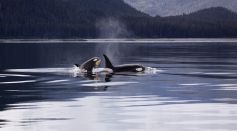ENVIRONMENT & CLIMATE

Will This Energy-Saving Transparent Wood Replace Your Typical Glass?

Neanderthal Teeth Serve as Evidence of Interbred Population

Cleaner Air From Pandemic Lockdown Spiked Earth's Temperature in 2020, Study
Capybaras: Everyone's Favorite Dog-Sized Rodent
New Study Suggests Warmer Climates Could Create More Harmful Mutations
New Bio-Inspired Joint Model to Create Better Robotic Exoskeletons
Researchers Explore Tsetse Flies’ Reproductive Biology, Provide New Insights Using 3-D Imaging Method
Experts Say Flying Rhinos Upside Down is Vital for Their Conservation

Post-Mortem Study Shows Numerous Population Threats to Orcas
Gigantic A68a Iceberg, the World's Largest, Shatters Into 13 Huge Chunks
Physics Sidewinder Snakes' Skin Explain How They Navigate Sandy Surfaces
Researchers Find New Light Receptors Among Marine Organisms

Expert Explains the Reason Phoenix May Be Uninhabitable by the End of the Century
Traffic Noise Adversely Affects Cricket Mating Behavior
Most Popular

Why Stars Twinkle: Flickering Explained by Atmospheric Turbulence and Light Distortion

The Role of Materials Science in Engineering: How Modern Engineering Materials Drive Innovation

Tornadoes vs. Waterspouts vs. Dust Devils: Key Differences and Vortex Types Explained

Climate Adaptation Strategies Explained: How Societies Respond to Climate Change




